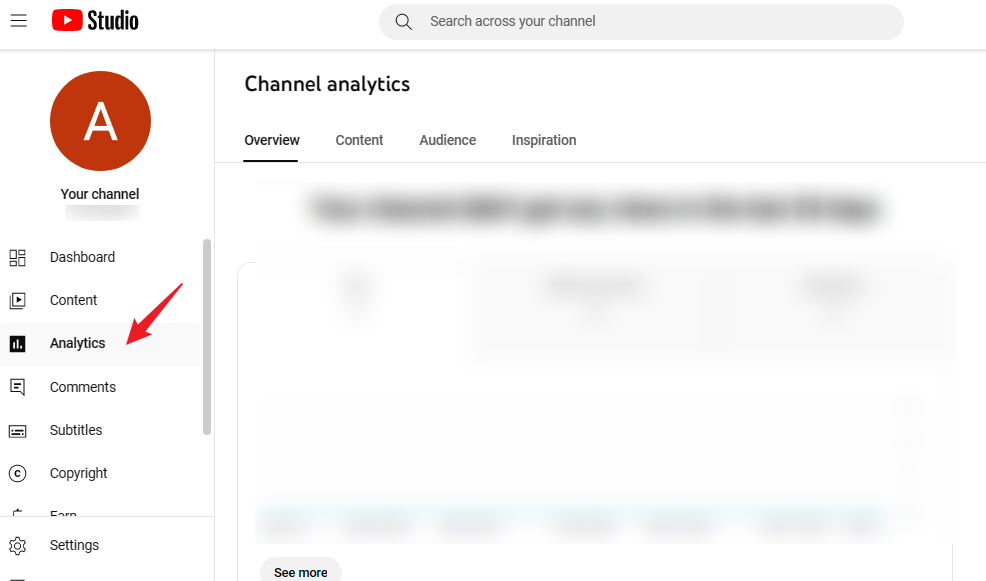Understanding your audience is key to creating engaging, successful content. Luckily, YouTube provides an incredible tool to help you do just that: YouTube Analytics. With the right data, you can fine-tune your content, improve your audience engagement, and ultimately grow your channel.
So, how exactly can you use YouTube Analytics to boost your content strategy? Let’s dive into the world of YouTube Analytics!

How to Use YouTube Analytics?
Why You Should Use YouTube Analytics
1. Uncover Audience Insights
YouTube Analytics is the secret to understanding who’s watching your content. It provides a wealth of information about the demographics of your audience, such as their age, gender, location, and even device preferences. By knowing this, you can create more tailored and relevant content.
For example, if your audience is primarily young adults aged 18-24, you may want to produce more content that resonates with this demographic, such as trends, challenges, or pop culture references.
2. Optimize Your Content Strategy
Content creation isn’t just about making videos—it’s about making the right videos. YouTube Analytics allows you to track key metrics like views, watch time, and audience retention. This data tells you which content types are resonating with your viewers and which ones need improvement.
For instance, if you notice that tutorial videos keep viewers engaged longer than vlogs, you can adjust your content strategy accordingly, focusing more on tutorials and less on vlogs.
3. Track Video Performance Over Time
With YouTube Analytics, you can easily track the performance of your videos over time. Whether you want to track how a specific video is performing or monitor the growth of your channel, these analytics provide the insights you need to make informed decisions.
This performance tracking also helps in measuring the success of your marketing efforts. If a video is performing exceptionally well, it may be worth promoting across social media or in ads to reach a broader audience.
4. Inform Your Growth Strategy
The data you gather through YouTube Analytics directly impacts your channel’s growth strategy. From identifying high-performing content to spotting trends, you can adjust your approach to grow your audience faster. Analytics helps you understand what works and what doesn’t, guiding your content and marketing efforts.
How to Access YouTube Analytics: A Step-by-Step Guide
1. Sign in to YouTube
The first step to accessing YouTube Analytics is to sign into your YouTube account. Simply go to youtube.com and log in with your credentials.
2. Navigate to YouTube Studio
Once logged in, click on your profile icon in the upper right-hand corner of the screen. From the drop-down menu, select “YouTube Studio.” This is where you’ll find all the tools you need to manage your channel, including analytics.
3. Access Analytics
In YouTube Studio, locate the “Analytics” section in the left-hand menu. Click on it, and you will be taken to a page where you can view detailed reports on your videos, channel performance, and more.
With this access, you’re now ready to start diving into the data!

Navigate to Analytics
Key Metrics in YouTube Analytics: What to Track and How to Use Them
Understanding the right metrics is crucial for making informed decisions about your YouTube strategy. Let’s break down the most important metrics and how you can use them to grow your channel.
1. Views
What It Shows:
The total number of times your videos have been watched. This metric is useful for gauging the popularity of a video.
How to Use It:
Use views to identify which topics and video types are resonating with your audience. If certain videos are receiving more views, you can create similar content to capitalize on this success.
2. Watch Time
What It Shows:
Watch time shows the total amount of time viewers have spent watching your videos. This is a more meaningful metric than views because it gives you an idea of how engaged viewers are with your content.
How to Use It:
If your watch time is low, it might indicate that your content isn’t holding viewers’ attention. You can use this metric to identify opportunities for improvement, such as creating more engaging intros, adding call-to-actions, or editing for better pacing.
3. Audience Retention
What It Shows:
Audience retention tells you how much of your video your viewers watch before they drop off. This is critical for understanding where in the video you lose people.
How to Use It:
By studying audience retention, you can spot patterns. For example, if you see that most viewers drop off within the first minute, it may be an indication that your intro needs to be more engaging. If viewers drop off towards the end, you may need a stronger call-to-action or a better wrap-up.
4. Demographics
What It Shows:
This metric provides data on the age, gender, location, and even the language preferences of your audience. Knowing who your viewers are helps you tailor your content and marketing to attract more of the right people.
How to Use It:
If your audience is mostly from a specific country, you can create content relevant to that region. Similarly, if your audience is primarily young adults, you may focus more on trendy or culturally relevant topics.
5. Traffic Sources
What It Shows:
Traffic sources reveal where your viewers are coming from—whether it’s YouTube search, suggested videos, external websites, or direct links.
How to Use It:
Understanding your traffic sources helps you optimize your promotional strategy. If you’re getting a lot of traffic from suggested videos, focus on improving your thumbnails, titles, and tags. If you’re getting views from external websites, consider partnering with other creators to drive even more traffic.
6. Subscribers
What It Shows:
This metric tracks your channel’s subscriber growth. It also provides insights into how well your videos are converting viewers into subscribers.
How to Use It:
Use subscriber data to evaluate what content encourages viewers to subscribe. If a particular video or series drives a lot of new subscribers, you’ll want to create similar content to continue growing your subscriber base.
Advanced YouTube Analytics Features
While the basic metrics mentioned above are great starting points, YouTube Analytics also offers more advanced features that can give you deeper insights into your performance.
1. Real-Time Analytics
Real-time analytics allows you to see how your videos are performing in the moment. This feature is great for tracking the immediate success of newly published content and can help you adjust your promotion strategy in real-time.
2. YouTube Studio’s “Compare” Tool
YouTube Studio’s “Compare” tool lets you compare the performance of multiple videos over a specific period. This feature is particularly useful when evaluating the effectiveness of your content strategy and determining which types of videos are working best.
3. Revenue Analytics
If you’re monetizing your channel, YouTube Analytics provides detailed revenue reports. You can track how much money you’re earning from ads, super chats, memberships, and other sources of income.
Tips for Leveraging YouTube Analytics for Better Results
- Review Your Analytics Regularly: Consistency is key. Make it a habit to review your analytics weekly or monthly to track progress and make necessary adjustments.
- A/B Test Thumbnails and Titles: Try different thumbnails and titles for your videos and use YouTube Analytics to see which combinations work best.
- Engage with Your Audience: Use the insights from your demographics and comments to create videos that engage your audience more effectively.
- Use Data to Drive Content Decisions: If certain types of videos are working well, lean into that content style. Likewise, if certain topics aren’t getting traction, experiment with new themes.
- Don’t Be Afraid to Pivot: If you see trends indicating that your current content isn’t resonating with viewers, don’t be afraid to change direction and try something new.
Wrapping Up: Mastering YouTube Analytics for Growth
Mastering YouTube Analytics is key to growing your channel and creating content that resonates with your audience. By regularly reviewing your analytics, you can make data-driven decisions to optimize your videos, increase viewer engagement, and ultimately, expand your channel’s reach.
Use the insights provided by YouTube Analytics to guide your strategy, track performance, and refine your content. The more you know about your audience, the better you can serve them and ensure the long-term success of your channel.
FAQs
1. How often should I check YouTube Analytics?
You should check YouTube Analytics regularly, preferably weekly or monthly, to stay on top of trends and make data-driven decisions for your content strategy.
2. How can I increase my watch time on YouTube?
To increase watch time, focus on improving the quality and engagement of your videos. Create longer, more in-depth content, use compelling intros, and encourage viewers to watch until the end by adding teasers for upcoming content.
3. What is the most important metric to track on YouTube?
While all metrics are important, watch time and audience retention are two of the most valuable metrics to track because they reflect how engaged viewers are with your content.
4. How can I improve my subscriber growth?
To grow your subscriber base, create high-quality, engaging content that provides value to your viewers. Ask viewers to subscribe at the end of your videos, and ensure your channel has a clear niche that attracts loyal followers.
5. How can I use traffic sources to grow my channel?
Analyze where your viewers are coming from and focus your promotional efforts on those channels. If you’re getting traffic from external websites, consider collaborating with other creators to drive more views and subscribers.



